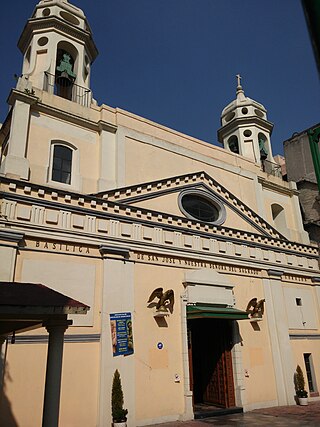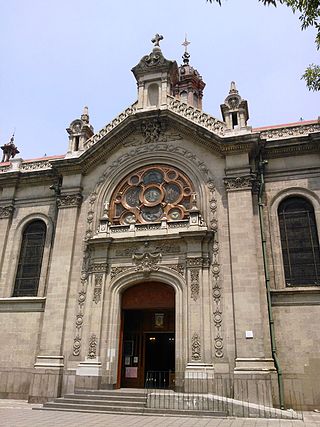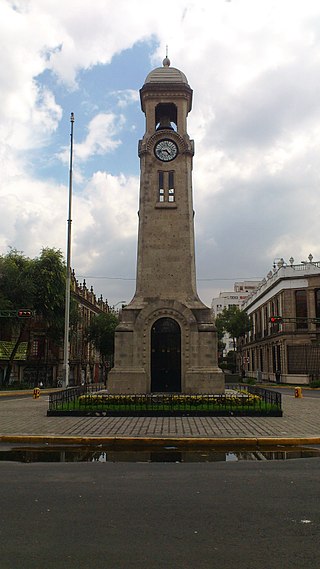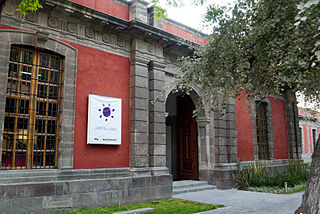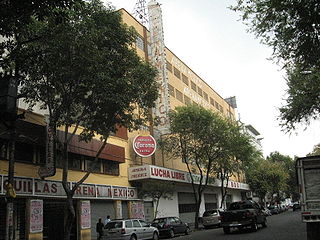Self-guided Sightseeing Tour #8 in Mexico City, Mexico
Legend
Guided Free Walking Tours
Book free guided walking tours in Mexico City.
Guided Sightseeing Tours
Book guided sightseeing tours and activities in Mexico City.
Tour Facts
2.2 km
28 m
Experience Mexico City in Mexico in a whole new way with our free self-guided sightseeing tour. This site not only offers you practical information and insider tips, but also a rich variety of activities and sights you shouldn't miss. Whether you love art and culture, want to explore historical sites or simply want to experience the vibrant atmosphere of a lively city - you'll find everything you need for your personal adventure here.
Activities in Mexico CityIndividual Sights in Mexico CitySight 1: Basílica de San José y Nuestra Señora del Sagrado Corazón
The Basilica of San José and Our Lady of the Sacred Heart is a Catholic temple located in the San Juan neighborhood of the Historic Center of Mexico City in the Cuauhtémoc Mayor's Office. It was built at the end of the eighteenth century and rebuilt in the middle of the nineteenth century. Its patron saint's day is celebrated on March 19. It is characterized by being one of the few colonial buildings that are preserved in the neighborhood of San Juan and for holding the title of minor basilica. It was declared a historical monument on February 9, 1931,
Wikipedia: Basílica de San José y Nuestra Señora del Sagrado Corazón (ES)
Sight 2: Nuestra Señora de Guadalupe El Buen Tono
The Church of Our Lady of Guadalupe, known as the Church of the Good Tone, is a temple located in the San Juan neighborhood of the Historic Center of Mexico City in the Cuauhtémoc Mayor's Office. It was built at the beginning of the twentieth century. Its patron saint's day is celebrated on December 12. It is characterized by being the only temple in the country that is referred to by the name of a manufacturing establishment, as well as by its eclectic French-inspired style.
Wikipedia: Iglesia de Nuestra Señora de Guadalupe (Ciudad de México) (ES)
Sight 3: Reloj chino
The Chinese Clock is a tower clock that is located at the intersection of Bucareli and Atenas streets in the Juárez neighborhood in Mexico City. It was a gift from Puyi, the last Chinese emperor, and his government on the occasion of the centennial of the beginning of the Mexican War of Independence.
Sight 4: Biblioteca de México José Vasconcelos
The Citadel is a building in Mexico City, it was built between 1793 and 1807 by the Spanish architect José Antonio González Velázquez in order to house the Royal Cigar and Cigar Factory of Mexico. Currently in the building is the "José Vasconcelos" Library of Mexico and the Image Center and the headquarters of the General Directorate of Libraries of the Ministry of Culture of the country.
Sight 5: Arena México
Arena México is an indoor arena in Mexico City, Mexico, located in the Colonia Doctores neighborhood in the Cuauhtémoc borough. The arena is primarily used for professional wrestling, or lucha libre, shows promoted by Consejo Mundial de Lucha Libre (CMLL). The building is called the "cathedral of lucha libre". Arena México has a seating capacity of 16,500 when configured for professional wrestling or boxing events. The current building was completed in 1956, built by Salvador Lutteroth, owner of CMLL at the time and is the largest arena built specifically for wrestling. The building was used as the venue for the boxing competition at the 1968 Summer Olympics, and throughout the last half of the 20th century hosted several large boxing events.
Share
How likely are you to recommend us?
Disclaimer Please be aware of your surroundings and do not enter private property. We are not liable for any damages that occur during the tours.
GPX-Download For navigation apps and GPS devices you can download the tour as a GPX file.
